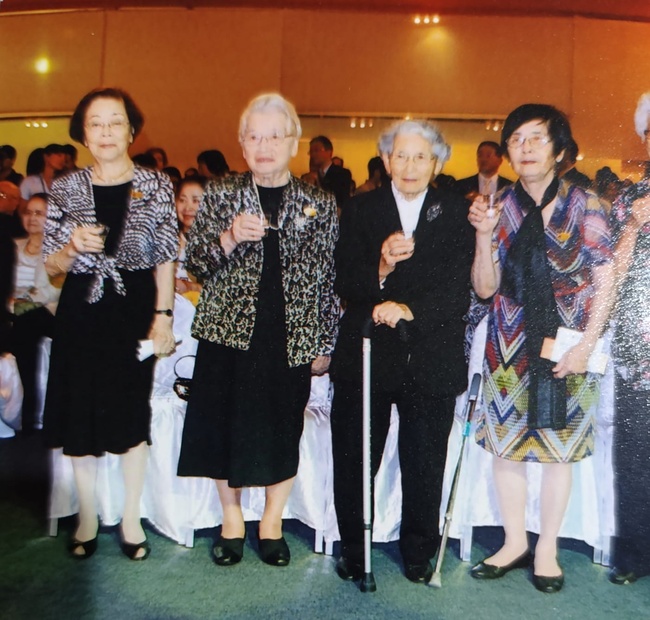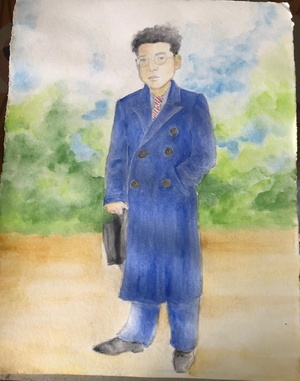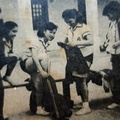International relations
In early February, President Fujimori traveled to Canada to meet with Japanese Prime Minister Ryutaro Hashimoto. In Canada, snow fell gently on the leaders as they disembarked their respective planes. On television, they were seen saying goodbye with a serene smile and a handshake. U.S. President Clinton welcomed him to the White House and shook his hand for the first time. Former Prime Minister Margaret Thatcher spoke with the President in England. Pope John Paul II welcomed him to the Vatican.
A Commission of Guarantors was formed to negotiate with the terrorists on behalf of the government in favor of a peaceful solution for all. The commission included the Minister of Education, the Canadian Ambassador, Monsignor Cipriani as a representative of the Vatican, and the Japanese Ambassador to Mexico and a representative of the Red Cross as observers. A house was chosen for the negotiations, along with a safe means of transportation to transport the terrorists.
The images continued on our televisions and in our lives. Day after day, we watched the coming and going of the white car of the Guarantor Commission, the entry and exit of the doctors, and the food carts brought by the Red Cross. Weeks passed, and boredom and tedium forced most of the correspondents to abandon their posts. But the Japanese journalists remained there with their cameras, chairs, and umbrellas, patiently eating their obento (snacks) from the Nakachi restaurant, reading books, waiting for something to happen. But nothing seemed to happen. . . .
The negotiations dragged on for too long. There was no progress or solution. If the terrorists ever had a goal, it lost significance. There was talk of releasing some imprisoned terrorists and seeking asylum in Cuba or Santo Domingo.

From rumors to the sudden outcome
So the days passed... In the country and around the world, everyone returned to their daily routines, although always attentive to the news. From time to time, something happened. There was talk of possible military incursions, tunnels, and spy equipment. After the rescue, it was learned that a group of miners had been secretly brought in from the Sierra to dig the tunnels, one in particular that reached right into the center of the residence's living room. The loud music blasting through loudspeakers and the marching tanks near the residence seemed to have drowned out the noise of the work they were doing.

One day in April, events began to unravel. The terrorists restricted doctors' visits without giving reasons and placed all the hostages on the second floor. A photo was shown in which a Red Cross representative chatted cordially with the terrorists and, presumably meant to remain neutral, passed on vital information for the success of the rescue. The young Red Cross member was expelled from the country amid complete secrecy.
One of the most important things learned was that every afternoon at 3 p.m. the terrorists removed their vests and weapons and played a game of soccer. They did this every day while the hostages took a nap on the second floor.
On the afternoon of April 22, at 3:17 p.m., the rescue operation unexpectedly began at the Japanese Ambassador's residence.
The last day
I was crossing Campo de Marte on foot toward the doctor's office in Mariscal Miller. It was around 3 p.m. on April 22nd. It was Roberto's birthday. The grass felt soft under my feet, and the warm evening sun and breeze made the walk a pleasant stroll after work at the hospital. There were few people on the streets.
Within a few minutes, the calm that had reigned in the streets turned into excitement. A helicopter was hovering overhead. People quickened their pace.
– “The military is taking over the residence . . . !” – I heard someone shout in the distance.
When I arrived at the office, I found all the doctors and patients watching television. On the screen, we heard the voice of the reporter, whose voice was nervous and euphoric, trying to get the attention of her central station. We watched in disbelief at what was happening.
A large explosion was heard on the side wall of the residence. From the large hole, amidst the smoke and dust, we saw several soldiers running out to enter the residence. Shortly before, a larger explosion had been heard inside the residence. This explosion had caught the terrorists playing soccer off guard in the middle of the room.
Another group of soldiers emerged from the bushes and trees in the front yard, carrying ladders to climb through the windows and onto the roofs. An explosion blew open the front door, allowing the soldiers to enter, firing without hesitation.
Above the residence, some soldiers had to open a hole in one of the roofs, throwing smoke grenades and firing inside. This lasted for several minutes, making us wonder what could be happening. Many hostages managed to escape through the roof.
Another group of soldiers climbed the stairs leading to the terrace, taking cover in a waiting position. Suddenly, the door leading to the terrace burst open. Incessant gunfire could be heard. Several hostages scrambled out with difficulty, and it seemed to us all, not quickly enough, tripping over the soldiers standing on the stairs who were trying to help them and hurry them down to the safety of the garden. Some crawled down the stairs, one came down in shorts with his pants in his hands. Chancellor Tudela reached the stairs bleeding from his shoulder and leg. He sat down on the garden floor, leaning against the wall, and, now safe from the bullets, received first aid.
Three stretchers came out. The soldiers rushed out, carrying the Chancellor on one stretcher. He raised his hand, thumbs up, signaling that everything had gone well for him at that moment. Commander Valer and Lieutenant Jiménez were carried on the other two stretchers, their arms hanging limply over the side of the stretcher. They were the only two soldiers who fell during the crossfire.
Finally, a soldier on the roof energetically and decisively detaches the red flag from its pole and pulls it down. The soldiers on the stairs raise their arms in triumph. The capture of the residence was over. Only twenty minutes had passed. For us... almost a century.
© 2025 Graciela Nakachi Morimoto










